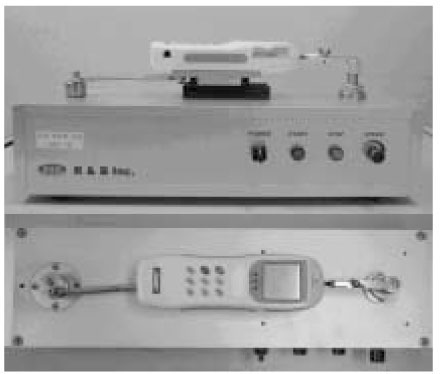J Korean Acad Conserv Dent.
2008 Mar;33(2):125-132. 10.5395/JKACD.2008.33.2.125.
The effect of different bonding systems on shear bond strength of repaired composite resin
- Affiliations
-
- 1Department of Conservative Dentistry, Pusan National University, Busan, Korea. jeongkil@pusan.ac.kr
- KMID: 1986757
- DOI: http://doi.org/10.5395/JKACD.2008.33.2.125
Abstract
- The purpose of this study is to compare the shear bond strength of repaired composite resin with different bonding agents and evaluate the effect of bonding agents on composite repair strength. Forty composite specimens (Z-250) were prepared and aged for 1week by thermocycling between 5 and 55degrees C with a dwell time of 30s. After air abrasion with 50 microm aluminum oxide, following different bonding agents were applied (n = 10); SB group: Scotchbond multipurpose adhesive (3 step Total-Etch system); SE group: Clearfil SE bond (2 step Self-Etch system); XP group: XP bond (2 step Total-Etch system); XE group: XenoIII (1 step Self-Etch system). After bonding procedure was completed, new composite resin (Z-250) was applied to the mold and cured. For control group, 10 specimens were prepared. Seven days after repair, shear bond strength was measured. Data was statistically analyzed using one-way ANOVA and Tukey's test (p < 0.05). The means and standard deviations of shear bond strength (MPa +/- S.D.) per group were as follows: SB group: 17.06; SE group: 19.10; XP group: 14.44; XE group: 13.57; Control Group: 19.40. No significant difference found in each group. Within the limit of this study, it was concluded that the different type of bonding system was not affect on the shear bond strength of repaired composite resin.
Figure
Reference
-
1. Papacchini F, Magni E, Radovic I, Mazzitelli C, Monticellia F, Goracci C, Polimeni A, Ferrari M. Effect of intermediate agents and pre-heating of repairing resin on composite-repair bonds. Oper Dent. 2007. 32:363–371.
Article2. Gordan VV, Shen C, Riley J 3rd, Mjör IA. Two-year clinical evaluation of repair versus replacement of composite restorations. J Esthet Restor Dent. 2006. 18:144–154.
Article3. Papacchini F, Dall'Oca S, Chieffi N, Goracci C, Sadek FT, Suh BI, Tay FR, Ferrari M. Composite-to-composite Microtensile Bond Strength in the Repair of a Microfilled Hybrid Resin: Effect of surface treatment and oxygen inhibition. J Adhes Dent. 2007. 9:25–31.4. Cavalcanti AN, De Lima AF, Peris AR, Mitsui FH, Marchi GM. Effect of surface treatments and bonding agents on the bond strength of repaired composites. J Esthet Restor Dent. 2007. 19:90–99.
Article5. Bonstein T, Garlapo D, Donarummo J Jr, Bush PJ. Evaluation of varied repair protocols applied to aged composite resin. J Adhes Dent. 2005. 7:41–49.6. Moon JW, Lee KW, Park SJ. The effect of surface treatments on the shear bond strength of repaired composites. . 1999. 24:156–162.7. Lucena-Martín C, González-López S, Navajas-Rodríguez de Mondelo JM. The effect of various surface treatments and bonding agents on the repaired strength of heat-treated composites. J Prosthet Dent. 2001. 86:481–488.
Article8. Ozcan M, Barbosa SH, Melo RM, Galhano GA, Bottino MA. Effect of surface conditioning methods on the microtensile bond strength of resin composite to composite after aging conditions. Dent Mater. 2006. 23:1276–1282.
Article9. Hannig C, Laubach S, Hahn P, Attin T. Shear bond strength of repaired adhesive filling materials using different repair procedures. J Adhes Dent. 2006. 8:35–40.10. Brosh T, Pilo R, Bichacho N, Blutstein R. Effect of combinations of surface treatments and bonding agents on the bond strength of repaired composites. J Prosthet Dent. 1997. 77:122–126.
Article11. Lim HN, Chol HY. A Study on the optimal surface treatment of composite resin restorations for the bonding of resinous materials. J Korea Res Soc Dent Mater. 1997. 24:91–108.12. Her SB, Lim BS, Kim CW. Effect of surface treatment and thermocycling on the shear bond strength of repaired posterior hybrid composite resins. J Korea Res Soc Dent Mater. 1997. 24:247–256.13. Tezvergil A, Lassila LV, Vallittu PK. Composite?composite repair bond strength: effect of different adhesion primers. J Dent. 2003. 31:521–525.
Article14. Teixeira EC, Bayne SC, Thompson JY, Ritter AV, Swift EJ. Shear Bond Strength of Self-etching bonding systems in combination with various composites used for repairing aged composites. J Adhes Dent. 2005. 7:159–164.15. Shahdad SA, Kennedy JG. Bond Strength of repaired anterior composite resins: an in vitro study. J Dent. 1998. 2:685–694.16. Hagge MS, Lindemuth JS, Jones AG. Shear bond strength of bis-acryl composite provisional material repaired with flowable composite. J Esthet Restor Dent. 2002. 14:47–52.
Article17. Söderholm KJ, Roberts MJ. Variables influencing the repair strength of dental composites. Scand J Dent Res. 1991. 99:173–180.
Article18. Boyer DB, Chan KC, Reinhardt JW. Build-up and repair of light-cured composites. J Dent Res. 1984. 63:1241–1244.19. Sau CW, Oh GS, Koh H, Chee CS, Lim CC. Shear bond strength of repaired composite resins using a hybrid composite resin. Oper Dent. 1999. 24:156–161.
- Full Text Links
- Actions
-
Cited
- CITED
-
- Close
- Share
- Similar articles
-
- Effect of delayed time, surface treatment, and repair material on shear bond strength of repaired bis-acryl composite resin
- The shear bond strength of two adhesives bonded to composite resin and glass ionomer cement restorations
- Self-adhesion of low-viscosity composites to dentin surface
- Influence of adhesive application on shear bond strength of the resin cement to indirect resin composite
- The effect of repeated bonding on the shear bond strength of different resin cements to enamel and dentin


